
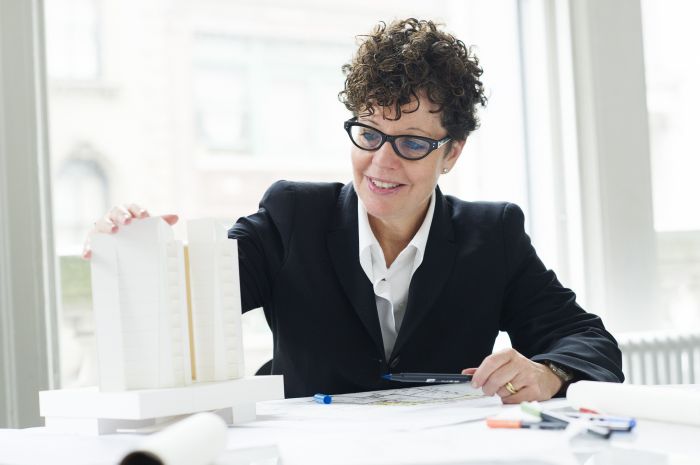
Nancy Ruddy, with John Cetra, co-founded CetraRuddy in 1987, where she serves as the firm's Executive Director of Interior Design.
She directs program development and strategic planning for more than twenty million square feet of architectural and interior design work, leading a team of skilled professionals to produce highly original, custom solutions for commercial, residential, cultural, and educational clients.
Her passion for excellence is consistently manifest in her architectural projects, defined by their crafted detail, innovative use of material, and elevating spirit.
She holds a Bachelor of Arts in Architectural History from New York University, and her honors include "100 Women Leaders for the 21st Century" by Real Estate Weekly and the Association of Real Estate Women, “Business Owner of the Year” by the National Association of Women Business Owners and the Career Achievement Award of the School of Architecture of the City College of New York in addition to the numerous design and sustainability awards garnered by the firm’s many award-winning projects.
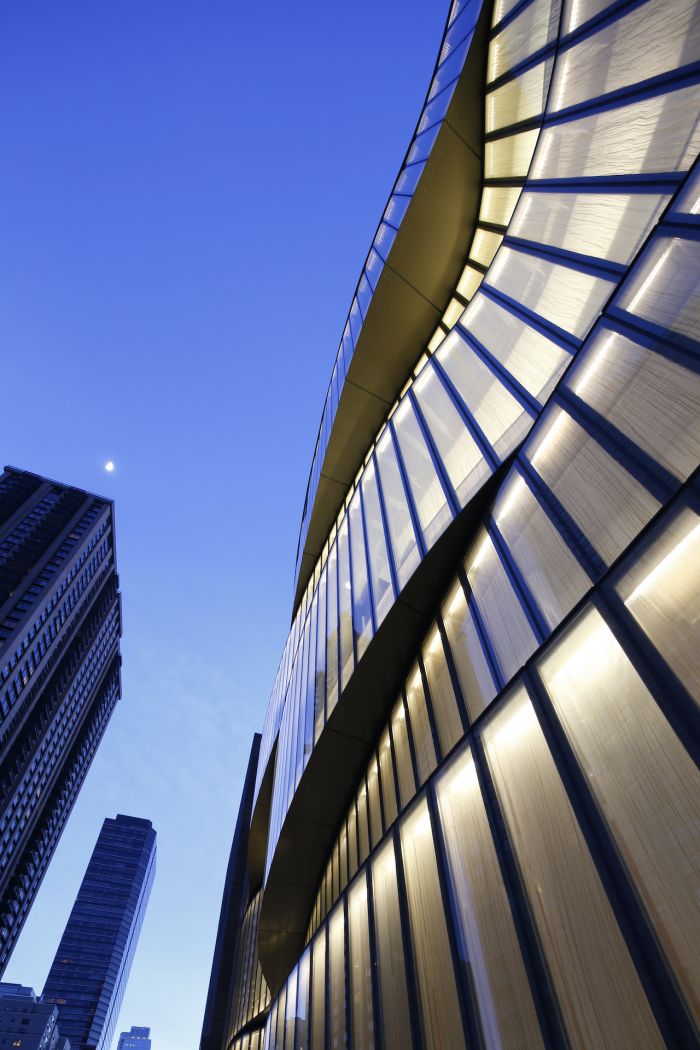
JustLuxe was appreciative to be in recent conversations with her.
JustLuxe: You have worked on multiple high-end, mixed use, residential projects, and museums. How do you see the difference in building philosophies (how the space will be used, and what materials bring the highest and best use to fruition) as it relates to architectural designs and materials used, or is there any difference in philosophy when it comes to getting a design finished?
Ms. Ruddy: We work on diverse building typologies and space types, all with different users, client mission and functions. The consistency of approach for all of these assignments is a commitment to understanding the goals of the project, the building context and the people who will be living, working or visiting the building.
We also have a commitment to architecture and design that inspires and creates memorable moments. We develop spaces and buildings that incorporate a medley of authentic and natural materials that we execute with craft and tactile compositions. Our other guiding principle that applies to all building types is to design with authenticity and depth of thought, while also creating environments that delight the eye.
Indoor/outdoor connectivity and the benefits of biophilic design, based on the benefits that humans gain from contact with nature, have always been an important component of our practice. The design of 200 East 59th Street embraces this important principle through the use of continuous private balconies and floor-to-ceiling glass that provide indoor/outdoor living, as well as cross ventilation and a luminous interior environment. These continuous ribbons of concrete and glass are punctuated by outboard structural columns that allow for maximum flexibility within the residences.
JustLuxe: Do many of your properties have a sustainability DNA to them? How do you see this eco-sensibility growing in the immediate future? Or is it growing at a slower pace in the Northeast?
Ms. Ruddy: We have always been committed to designing sustainable and socially responsible buildings, from the orientation of form to capture sunlight and ventilation to the materials we use. We are happy that over the last ten years, and the heightening of public awareness of health and wellbeing over the past year, developers, public agencies, educators and the public believe that sustainable and resilient elements are essential. The integration of sustainability, resilience and social equity are integrated into our thought processes from the beginning of every project; they are essential building blocks in any project’s DNA.
JustLuxe: On your website, you define your mission and vision in terms of core beliefs: CetraRuddy’s core beliefs begin with the idea that Architecture Is Home, always seeking out the story behind each building site, their deep historical context, and fresh opportunities to craft innovative solutions and lead clients on their journeys toward building a new legacy. How do these combine in the creation of a new building versus the renovation of an older one?
Ms. Ruddy: Our core belief — that Architecture is Home — relates to all building typologies. Whether we are designing a school, a residence or a synagogue, the sense of nurture and welcome are core elements that can create a foundation for positivity and wellbeing. In designing a new building, we study the contextual fabric of the neighborhood or the town, to create a forward-looking building that embraces the provenance, history and culture that currently exists or did exist hundreds of years ago on the site.
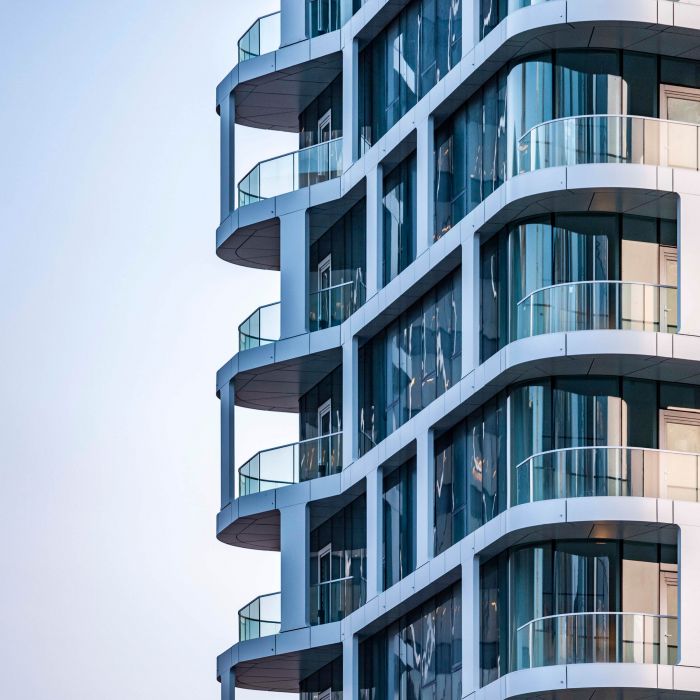
For an existing building, that contextual relation is more challenging. Approximately half of our work is adaptive reuse; bring life back to underutilized buildings or adapting office buildings or hotels to housing. The exciting challenge of adaptive reuse is researching the essential elements of the building, determining what can be preserved and developing floor plans that are appropriate for modern use. Many office buildings have much deeper floor plates than are needed for residential use because of the need for light, air and cross ventilation. We have dealt creatively with these challenges by creating alternative uses at the building core and designing apartments that have added spaces such as remote work areas, media rooms and library/home study areas that don’t need direct access to direct light.
JustLuxe: I am interested in the architecture and interior design elements for FOTOGRAFISKA NEW YORK — what elements of Swedish design did you add to the already existing architecture of Fotografiska – especially in terms of the library in the building?
Ms. Ruddy: Fotografiska is a Swedish-based museum. We went to their original museum in Stockholm and spent days with the owners, Jan and Per Broman, and all key members of their curatorial and operations staff to learn about the mission and goals of the museum. We also spent days in the galleries and food venues to see how visitors interacted with the exhibits and the venues. At Fotografiska New York, we brought the spirit of the mission of the museum in Stockholm interpreted for New York City.
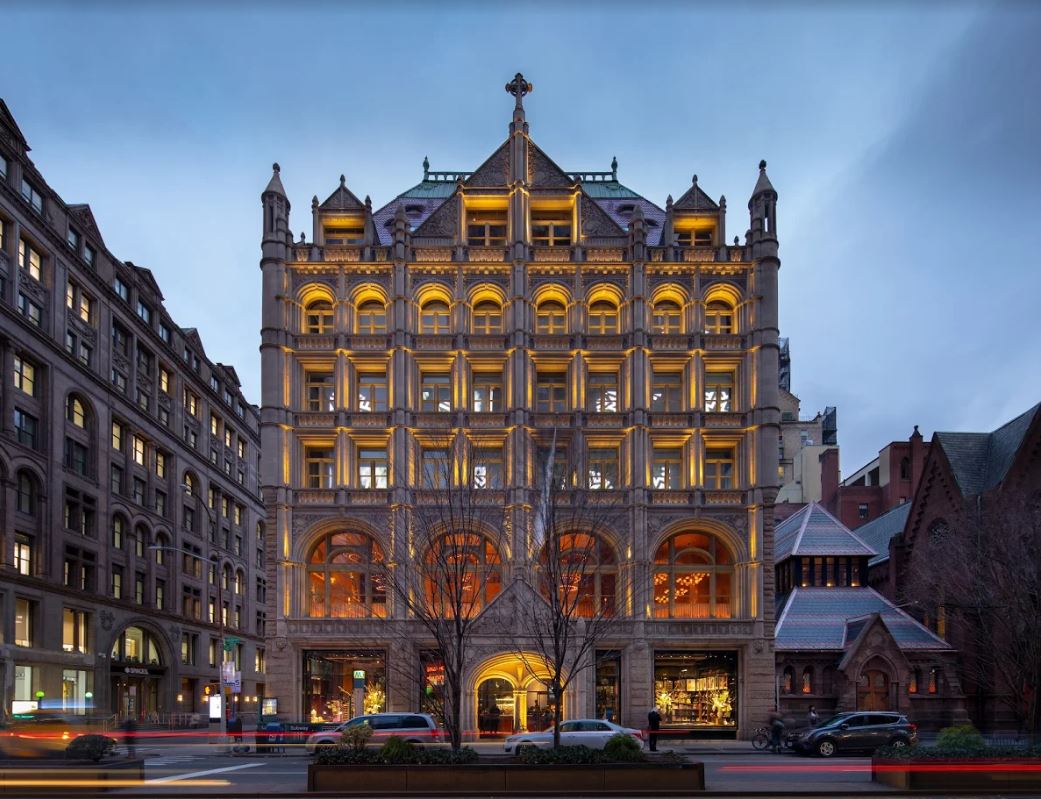
Key to the design is the use of authentic materials incorporated in a simple and elemental way. We used patinaed wood, raw steel, and concrete which are timeless materials used in the canal-side industrial building in Stockholm. As important, was the integration of art, food, learning and celebrating the sharing of art and cultural experience within one building. In contrast to many museums throughout the world, the physical environment at Fotografiska is meant to encourage dialogue, multi-sensory experiences, and the enjoyment of food and beverages to be enjoyed as one views the exhibits.
JustLuxe: I already wrote about the renovation of the curved building on 72nd street. What were the most challenging aspect of this design, and how do you see this building’s legacy, both old and new?
Ms. Ruddy: At 212 West 72nd Street we created gracious light-filled homes that typically are not found in light-filled modern buildings in the neighborhood. We incorporated luxurious materials, bespoke crafted details and lovely proportioned spaces to compliment the considered floor plans to create valued family apartments.
JustLuxe: You have been in the field for a while — and you and John must be great partners. What makes a good architectural partnership, and how do shared and challenging values merge into the creation of great buildings?
Ms. Ruddy: Great architecture is the result of collaboration. The four partners of CetraRuddy along with our team of passionate individuals work closely to develop ideas, spaces and buildings that none of us could have designed alone. John and I and our partners, Eugene and Ximena, have shared values and guiding principles that direct our journey. We are committed to excellence in every aspect of our work. We also hold a deep belief that buildings can create community and can, in addition, promote health and wellbeing. We strongly believe that our role as architects and designers is to create socially responsible environments that are inclusive and will help to create better cities and a better world.
JustLuxe: I particularly like the Corcoran Soho building, because the lines are clean and minimalist — I think that is a breath of fresh air needed for the complex work that Brokers must do. Is the type of work done in your buildings relate to the interior design of the office spaces?
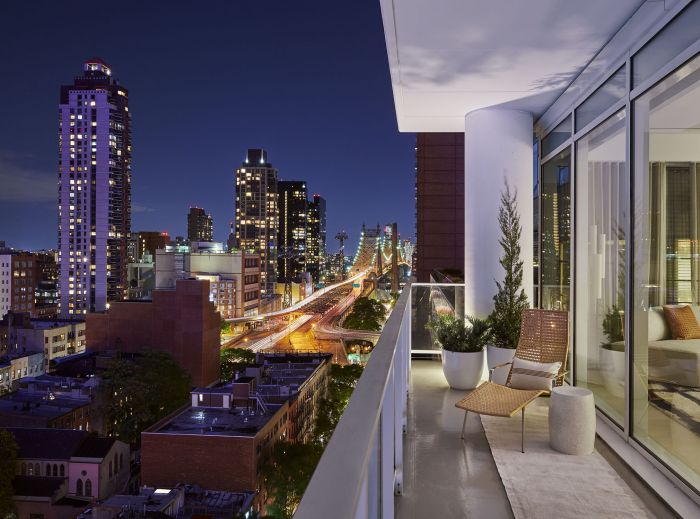
Ms. Ruddy: The design of The Corcoran Group’s offices in SoHo was, at the time, a new paradigm for a real estate office. At the time, brokers sat in small cubicles and the culture felt that siloed personnel were more productive. The SoHo office took the approach that cross-fertilization of ideas, developing relationships between personnel, would create a more welcoming, collegial environment. In this space, which was built before this new office environment became commonplace, we developed an open living room where people could meet informally and company members could meet in large and small groups in an informal setting. The offices are located in 120-year-old loft building so we kept original floors and exposed rugged beams to create a warm historic complement to a sleek minimalist interior.
JustLuxe: You said on your website that architecture means home. I think that is true, but it also determines the legacy of the area around it, and for a time at least, the intensity of the stewardship of the building itself. Are there projects that you remember clearly where you saw your vision — “We craft skylines, create moments and speak to the poetry of humanity with empathy and generosity” – become reality?
Ms. Ruddy: The ”vision” for some projects require lots of archeological and historic investigation, others are clear responses to site opportunities, and some, after much discussion with clients, come to us in the shower or walking in nature. The design of Rose Hill, our newest residential building in New York City designed for the Rockefeller Group, was a convergence of the architectural traditions of its NoMad (North of Madison Avenue) neighborhood, the desire to create a tower that continued the tradition of great Gotham skyscrapers and the provenance of the Rockefeller Group’s development of Rockefeller Center and our joint commitment to quality. This modern tower tips its hat to the Art Deco era when Rock Center was built while innovating for the future.
JustLuxe: What three or four projects would you want to be remembered for and why?
Ms.Ruddy: Every building and space we have designed tells a story in our career that remains relevant and poignant to us. I always feel that the projects we are working on right now are the most important and that our work will continue to evolve to be our next chapter of bests. Particularly meaningful would include, but not be limited to:
1.Fotografiska Museum: This is our first museum that recently opened in New York. We were awarded the project by the founders from Stockholm, because they had seen our work and knew that we had the sensitivity to art, the craft of authenticity and the passion for our craft. In a world where many believe that you need to have designed ten of those typologies before, this was a righteous expression of a client believing in one’s work and commitment to their mission.
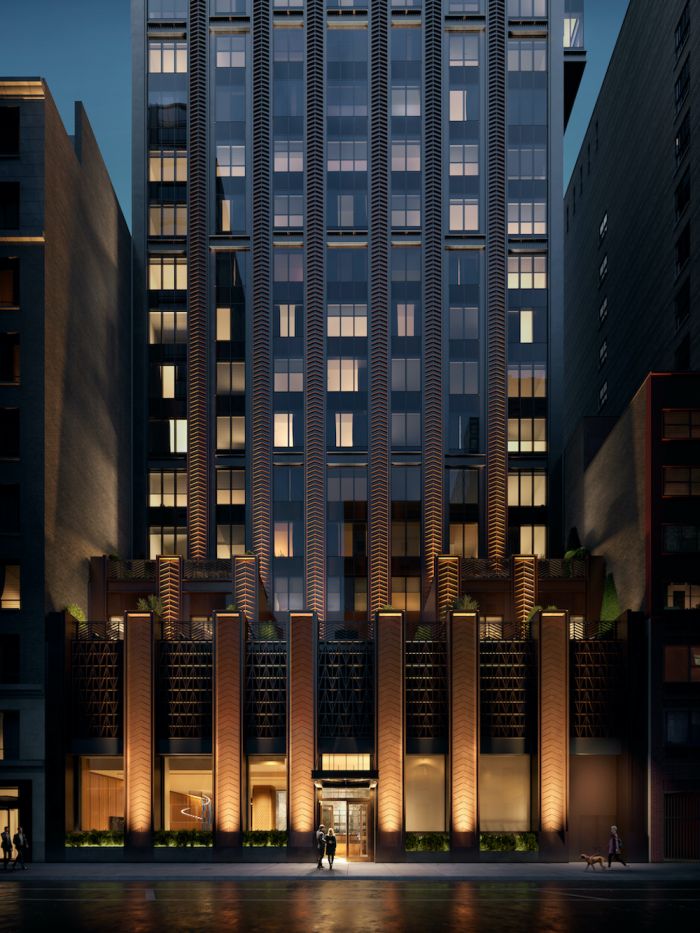
2.ARO is a twisting white rental tower that rises between dark office buildings in Midtown, New York. The building’s form which gently cantilevers outward is the result of our goal to capture view corridors between the densely built surrounding. The building façade, which appears to be an expensive custom installation was designed out of 7 standardized elements that are combined in a variety of ways to create variation and undulation.
Rose Hill Entrance (Rendering)
3.The Barbizon was designed in 1929 as a woman’s hotel for young women coming to New York without chaperones. Single concrete-walled rooms were temporary homes to such luminaries as Greta Garbo and Grace Kelly. We converted the hotel to residential condominiums. For me, the connection of being a woman architect, leading this complex adaptive reuse project was very meaningful. The conversion, both on the interior and exterior was so meticulous and thoughtful that after the project was completed, it was awarded landmark status by the NYC Landmarks Commission.
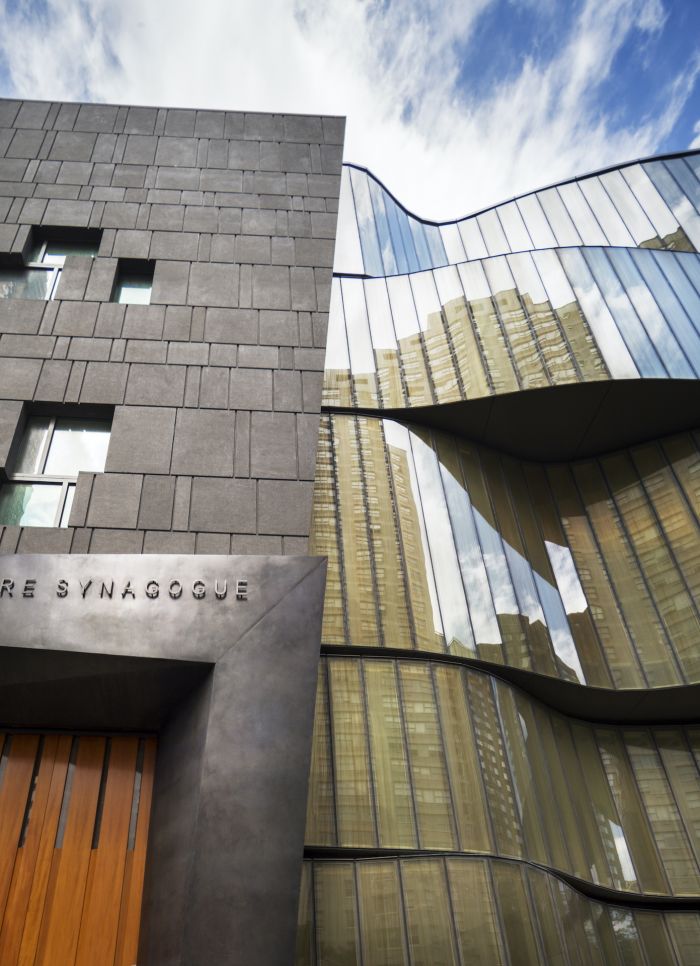
4.Lincoln Square Synagogue was a commission of a lifetime. It is the first ground-up synagogue to be built in New York for almost 50 years. It is a building design based upon our study of the Bible and the heritage of the Jewish people. It is an innovative building reaching for the future in its form and technology yet grounded with symbolism centuries old. From creating an innovative undulating façade of five ribbons of glass that represent the five books of the Torah to using original biblical woods, it is a building that encapsulates the spirit and inspires all who visit.